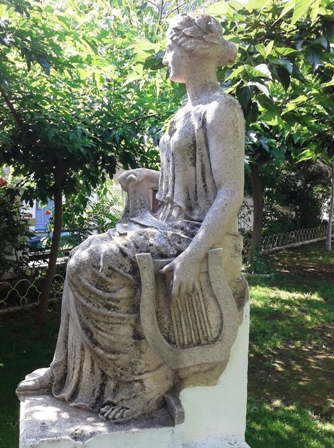 Built in the place of the ancient town of Thiva in a fertile plain, Thiva is associated with the tradition of Kadmos, Oedipus and Kreon.The region has been continuously inhabited since the Prehistoric era and became very prosperous during the Mycenaean period (1600-1100 B.C.), while during the Classic period under the control of Epameinondas and Pelopidas (371- B.C.) it became the predominant town. The decline started after it was destroyed by the Macedonians in 335 B.C. and continued during the Roman occupation and the barbarian raids. The silk processing brought economic prosperity to Thiva during the 8th – 12th centuries. Then came the Frankish (12th -15th centuries) and the Turkish rule (15th -19th centuries). Thiva was liberated after the battle of Petra in September 1829. Nowadays, it has 21,211 inhabitants and is agricultural, commercial and industrial center of the Prefecture of Boeotia. Thiva is located 45 km east of Livadeia.
Built in the place of the ancient town of Thiva in a fertile plain, Thiva is associated with the tradition of Kadmos, Oedipus and Kreon.The region has been continuously inhabited since the Prehistoric era and became very prosperous during the Mycenaean period (1600-1100 B.C.), while during the Classic period under the control of Epameinondas and Pelopidas (371- B.C.) it became the predominant town. The decline started after it was destroyed by the Macedonians in 335 B.C. and continued during the Roman occupation and the barbarian raids. The silk processing brought economic prosperity to Thiva during the 8th – 12th centuries. Then came the Frankish (12th -15th centuries) and the Turkish rule (15th -19th centuries). Thiva was liberated after the battle of Petra in September 1829. Nowadays, it has 21,211 inhabitants and is agricultural, commercial and industrial center of the Prefecture of Boeotia. Thiva is located 45 km east of Livadeia.
Thiva was a powerful city-state in 400 BC during Greece’s golden age, occupying a strategic position between northern Greece and the Peloponnese. The tragic fate of its royal dynasty, centered on the myth of Oedipus, rivalled that of ancient Mycenae. Present-day Thiva has few vestiges of its past glory, except those that can be viewed within the Archaeological Museum. On the acropolis of the ancient city stands the present commercial and agricultural centercenter of Thiva. Situated on a low ridge dividing the surrounding plain, the modern city is the seat of the Greek Orthodox bishop of Thiva and Levadia. It has abundant springs of water, the most famous one Dirce, and the fertile plain in the vicinity is well irrigated. Today, Thivas is a bustling market town, known for its many products and wares. Until the 1980s it had a flourishing agrarian production with some industrial complexes. Tourism in the area is based mainly in Thiva and the surrounding villages, where a lot of places of interest related to antiquity exist, such as the Plataea battlefield where the homonymous battle took place in 479 BC.